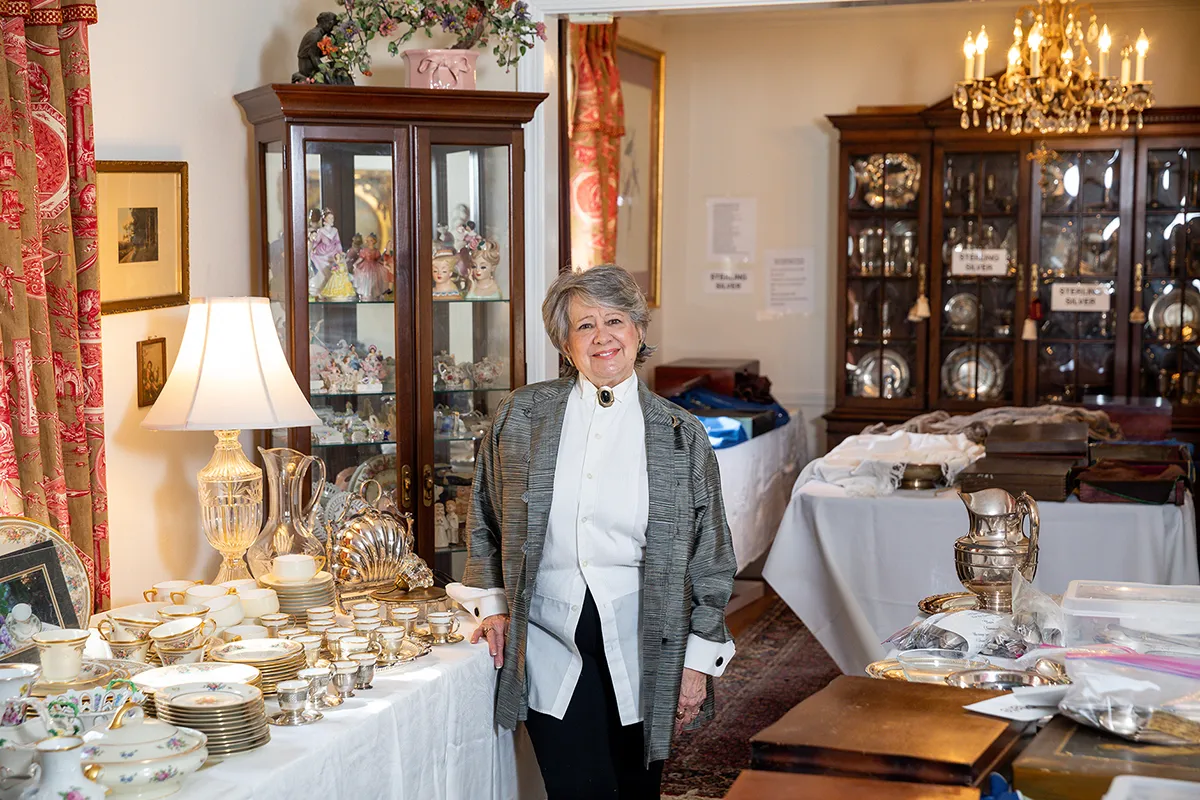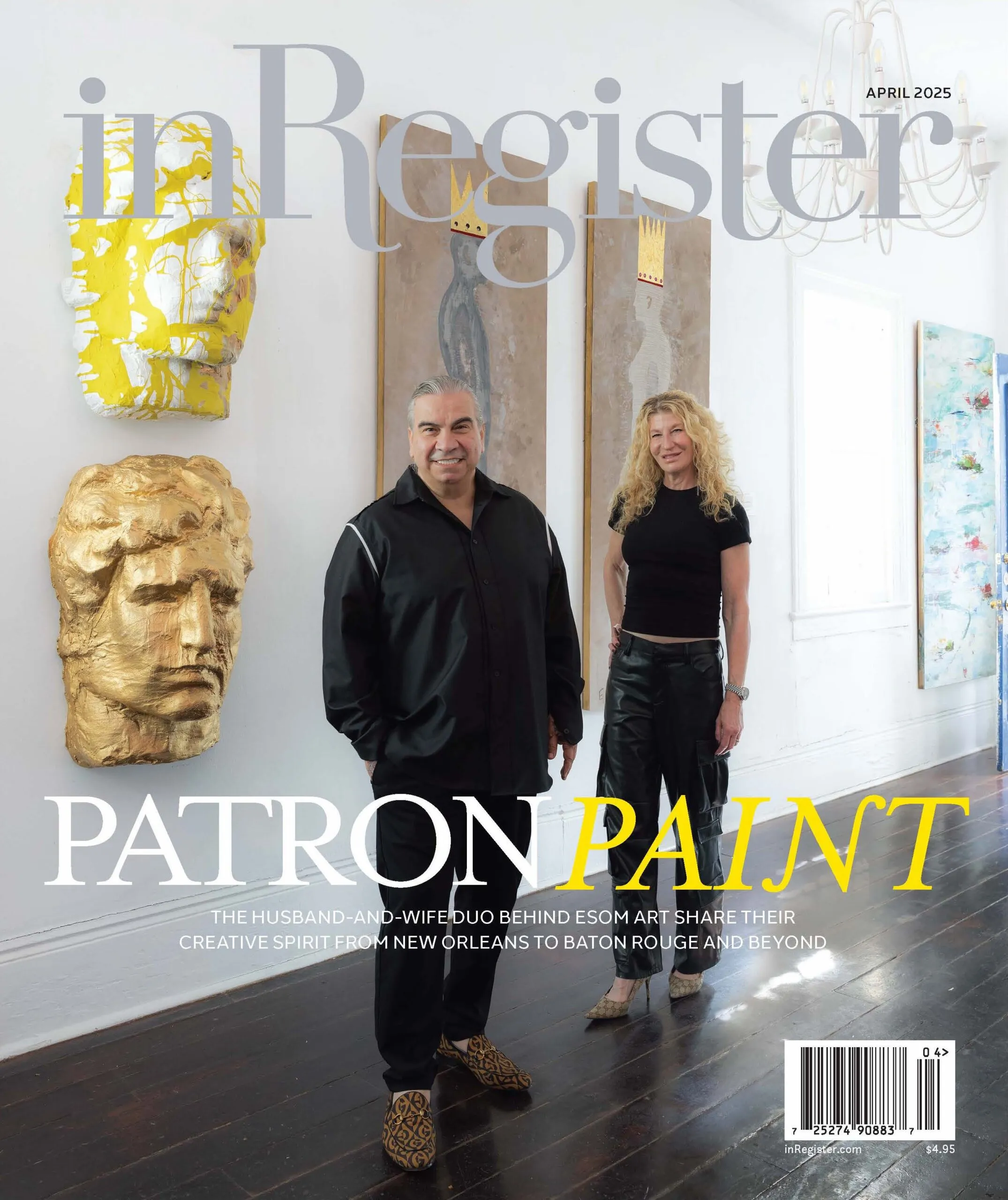
Local auction galleries and estate sales are on the brink of a modern renaissance
Bought by a Saudi prince for $450 million in 2017, Salvator Mundi (Savior of the World) remains the most expensive Old Masters artwork ever sold at auction.
Before its 2011 authentication as the Leonardo da Vinci masterpiece missing since 1763, the painting resided anonymously in Louisiana for five decades. The work was sold for $10,000 at a 2005 New Orleans auction after the death of its Baton Rouge owner, who inherited the painting from his aunt. In 1958, she had bought the piece—incorrectly attributed to da Vinci’s student—for $60 at the estate sale of Britain’s Sir Francis Cook. The latest chapter in the saga involves curators of the “Leonardo and the Copy of the Mona Lisa” exhibition at Madrid’s Prado Museum calling the painting’s pedigree into question.
While that’s the stuff of legends and Antiques Roadshow, you don’t have to inherit an English estate to find yourself with furniture, décor or collectibles that don’t fit your lifestyle or living space. As they begin to downsize, some baby boomers find their children don’t want Grandma Sue’s cedar chest, Uncle Ernie’s watch or other heirlooms.
Conversely, with millions of goods moored off the California coast indefinitely, shoppers online and elsewhere are exploring alternative sources for quality furniture, décor and collectibles that can be delivered today. At the crossroads of downsizing and demand, local auction galleries, appraisers and estate sale companies are attracting a new generation of sellers and buyers.
If you’re looking to sell or buy interesting items, you’ve come to the right place—or, you live in the right place. “New Orleans is an auction mecca,” says Adam Lambert, a licensed auctioneer and owner of Crescent City Auction Gallery (CCAG) in New Orleans. “Three auction houses—CCAG, New Orleans Auction and Neal Auction—do about $40 million a year in annual sales of 30,000 items. That’s unusual outside of New York.”
Sure, buyers and sellers can DIY and connect on Facebook Marketplace, Mercari and other apps. “But, what if [an item you sell on Facebook for $500] could be marketed worldwide for $10,000?” Lambert asks. “With [online] auctions, we average 24,000 bidders and buyers annually from as far away as China, Hungary and Russia.”
While the internet increases the number of potential online bidders, it allows bidders to instantaneously evaluate comparable items to determine the best buy. “The price of antique furniture has to do with the internet and the availability of goods,” Lambert explains. “If you’re looking at a Louis Philippe armoire at auction, you can go to your phone and find the same thing multiple places.”
Technology also makes it easy for professionals to assess your collection—without trucking it down I-10.
“Eighty percent of our evaluating is done with photos [uploaded to the website by sellers],” says Lambert.
The ability to evaluate a high volume of items quickly contributes to the diversity of each auction. A recent three-day CCAG sale featured everything from a 2.97-carat emerald, diamond and gold ring to Clementine Hunter folk art paintings to pre-Columbian pottery.
“On average, we evaluate 230 items a day,” Lambert says. “In a year, we view 60,000 items and sell 5,600. In the weeks after a sale, [we ship] 500 items.”
Whether you’re a seller, a buyer or just curious about an unexpected acquisition, you may wonder: What’s this piece worth? Is it trash or treasure? And whom can I trust to provide that information?

Sometimes, the IRS, insurance companies or courts rely on an independent appraiser to establish the value of jewelry, art and other assets based on federally recognized standards. Before making a major investment, many collectors also seek the advice of nationally certified fine art appraisers such as Robyn Dunn Schwarz of Matthew Clayton Brown Art Appraisals, Consultations and Brokerage in New Orleans. Like many specialized appraisers, Schwarz’s credentials include extensive experience in her field at galleries in Los Angeles and Santa Fe as well as nearly a decade as assistant vice president in impressionist and modern art at Sotheby’s.
Before placing a bid or an item up for sale, Schwarz suggests buyers research comparable work online in pre- and post-sale catalogs. Condition reports list each item’s distinctive features, from the use of a rare material or technique, to a master craftsman’s mark, to cracks in paintings, frayed fringe on rugs, and chips in porcelain.
“I always find auction houses to be a pretty good resource,” she says. “They’re really an unbiased party because they’re representing both the buyer and the seller.”
Auction galleries host in-person previews to encourage buyers to examine items themselves and direct any questions to in-house experts—many of whom are nationally or internationally credentialed appraisers themselves.
“If you’re really confused, seek out multiple opinions,” Schwarz says. “Sometimes, the more information you collect, the better you’re able to make the best decision.”
And while prices fluctuate based on demand, they’re usually significantly less than retail. That’s why dealers and resellers make up a third of the customer base, in addition to collectors and individual buyers.
Over time, interactions with both sellers and buyers build an auction gallery or estate sale firm’s reputation. “That’s why I never deviate from how I run my business,” Noelle Lanier says. “Integrity is everything,”
After 33 years, that business—NL Estate Sales of Baton Rouge—has a devoted following. Even during 2020, nearly 300 masked people a day waited in socially distanced bubbles and followed COVID protocols so they could be temperature checked and enter NL sales.
While she constantly consigns individual items, Lanier only accepts five estate clients per year because her sales require a 30-day setup. “We stage everything from the Christmas room to the bathroom and the garage,” Lanier says. “There are no clothes on the floor or dirty sterling. That crystal is gleaming.”
As her loyal bidders know, “We go to great lengths to give our customers every [bit] of information about every piece—the artist, history or anything of import,” she explains.
And the values are often astounding. Before a recent sale, Lanier estimated a vintage, double-pedestal Duncan Phyfe dining table, table protectors, two leaves and six medallion-back chairs would sell for $1,500 or less.
For Lanier, the rewards of her business go well beyond commission. “This business has shown me the goodness of people,” she says. “Many customers are buying for others—a daughter, friend or little lady down the street. Not only that, but the honesty…” Buyers have returned with $1,800 cash or other valuables hidden in recent purchases.
“We’re trying to educate more people about estate sales because there’s so much camaraderie, they’re so much fun, and they’re so intriguing,” says Lanier. “You get a chance to see and touch so many unusual things.”
You’re also supporting local businesses and recycling or upcycling for a healthier planet—not to mention making some money from unwanted stuff or acquiring extraordinary pieces.
Admittedly, by going to auctions and estate sales, you won’t be saving the whole world—maybe just a small piece of it.
Find these experts’ tips for selling or buying treasures at estate sales and auctions on our website at inregister.com/features/old-is-new. NL Estate Sales’ next sale is December 17-19. Get details at nlestatesales.com.











